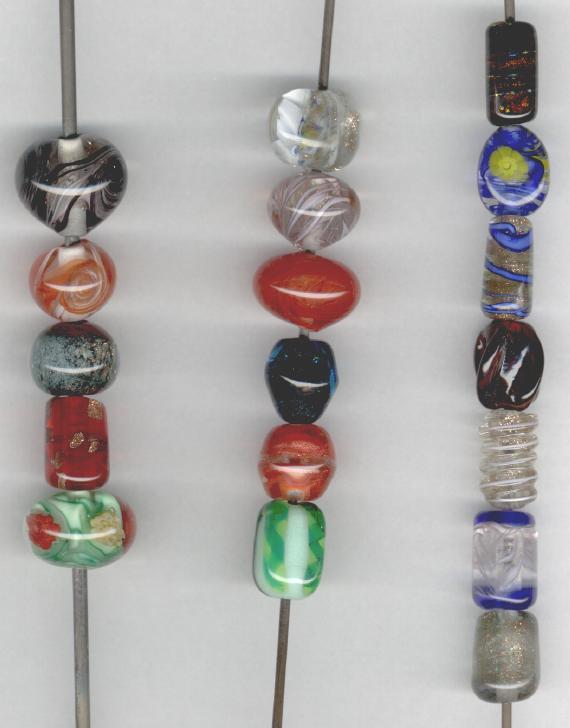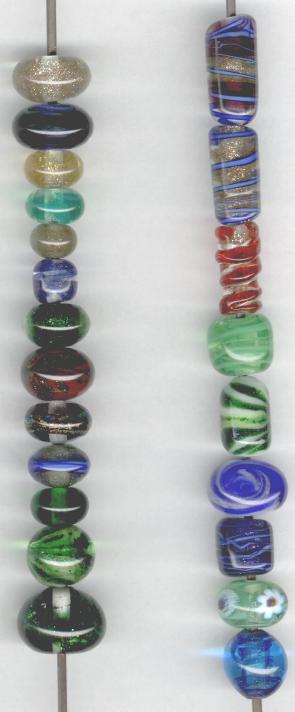

Wound beads? That's wound as in clock, not wound as in injury. You melt a stick (rod, cane) of glass. You then wind the molten glass onto a metal (much thinner) rod called a mandrel. The mandrel is coated with a clever solution rather like kiln wash. It grips the glass firmly and is very strong when hot. When cold and wetted it sort of dissolves into mud, and the glass slips off the mandrel -- well, sometimes it takes a bit more force than that, but if you're persistent and can beat the average person at arm wrestling, you'll get the darn thing off the mandrel. The hole where the mandrel was, is the hole in the bead.
After that, you have to clean up the hole a bit, because the mud (bead release) is still inside the hole and quite visible if the bead is transparent. So you have to scrub out the mud with small tools -- reamers, brushes, wire coils. When the bead is all scrubbed and washed, and any rough bits dressed down with diamond files, it's ready to use, sell, or give away to a deserving friend.
On the left: mostly the same beads that I made with a beginner's torch and soft soda-lime glass. You're seeing them edge-on instead of from the top (or bottom) this time. To the right are some other beads, mostly smaller, showing different techniques and ideas I was trying out. These are larger than life size so you can see details.


The bead pictures were made by the curious expedient of laying them directly on the scanner bed, covering with a white piece of paper, lowering the lid, and crossing my fingers :-) I am indebted to Rebecca Downey for this trick, I believe -- the picture quality is not bad, and it's a lot cheaper than a digital camera.
de@daclarke.org